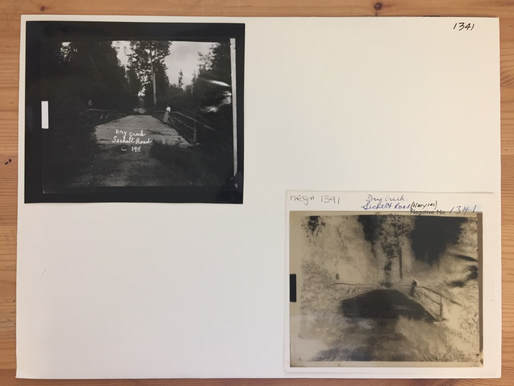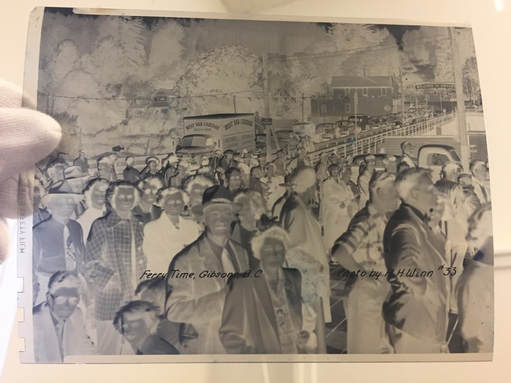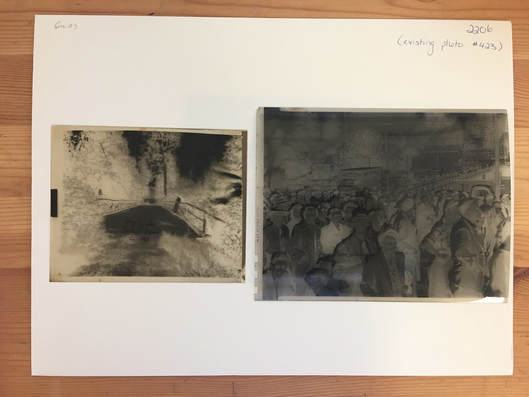 #1341: Both the negative and the photo have been preserved.
#1341: Both the negative and the photo have been preserved. Why is this important? This process is required in order to monitor any deterioration. As they degrade differently, the preservation of film materials can be complicated. There are three common types of film: nitrate, acetate, and polyester. Polyester (pictured above) is considered the only stable film-based material, while nitrate and acetate are not. When nitrate and acetate films deteriorate they can pose health and safety risks to people and surrounding collections. The Sunshine Coast Museum and Archives contains all three of these film-based materials, and consequently has to perform routine evaluations of all collections to ensure that they are being adequately cared for.
Nitrate film was used from the mid-1880s until the 1950s. If not kept at a low temperature, it will begin to deteriorate. As nitrate degrades, it emits toxic fumes that are dangerous to both people and other collections. The gas that is emitted is also highly flammable, and high temperatures increase the risk of combustion. However, all archives at the SCMA are continuously monitored for changes in both temperature and humidity. So while our collections still contain a small percentage of nitrate film, very few show any signs of deterioration.
With the popularization of cellulose acetate in the 1920s, the use of nitrate film began to decrease. Acetate, also known as “safety film”, was introduced as a substitute for nitrate. When acetate degrades it emits an acidic vapor. Though not toxic to people, it can damage surrounding collections. In order to track any deterioration that occurs, the museum performs a film-based inventory and evaluation.
How do we do this? First, we pull a photo from the archives and check to see if it has a negative. Then, we can identify film type/base (nitrate, acetate, polyester). This is where things can get complicated- and this is where Garry comes in! With a background in photography, he knows exactly what to look for how to assess levels of deterioration.
We begin by checking to see if the negative is a real, or just a copy of the original negative. Usually, a copy negative is an acetate copy of what was originally nitrate film. To do this, we check to see if there is any edge printing (words printed on the border), such as: “nitrate” or “safety” (acetate). A manufacturer/trade name (i.e.“kodak”) on the border signifies a polyester film base. Other techniques used for film type identification include “notch codes”: the shapes printed on the edge of the film. Nitrate film contains “V” shaped notches, while acetate film includes a “U” shaped notch printed on the edge. However, edge printing was not always used and notch codes are not always present (or intact). Therefore, we often rely on Garry’s trained eye to be able to differentiate between film bases.
 #2206: This negative is acetate! There are three "U" shaped notches along the bottom corner, and the words "safety film" printed along the edge.
#2206: This negative is acetate! There are three "U" shaped notches along the bottom corner, and the words "safety film" printed along the edge.
What do we do with all of this information? The inventory and evaluation process requires that the museum keep records of all our findings. This allows us to track the condition of our film-based collections to ensure the ongoing preservation of our collection into the future.



 RSS Feed
RSS Feed
